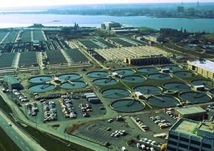cleantech strategy


cleantech strategy


I get asked a lot during my courses how consultants can take advantage of the CleanTech boom, since many engineers will not necessarily be involved in manufacturing and sales. A recent interview on the CleanTech Network’s site with Scout Boutwell, who provides technology commercialization and strategy services to IT and cleantech firms as well as to global Environmental Consulting and Engineering & Construction (E&C) firms sheds some strategic light on this issue. His blog covers anecdotes and growth strategies in the environmental/green and engineering design sectors.
Scout argues that there are a number of lessons we can take away from the growth demands and strategies experienced in the IT sector, including the value of the (E&C) channel in accelerating the adoption of technologies. First, there are a lot of similarities between the CleanTech and IT/software market, including:
1. Cleantech start ups are usually founded by strong engineering and academic individuals, who are not necessarily strong in market strategy and sales.
2. Many new investors do not have deep domain expertise, as evidenced by the rapid influx of capital into this sector.
3. Creating demand in the market requires strategic accounts where successful referenceable pilot projects can be deployed.
4. The market strategy may be met via a direct sales force, or via indirect sales & deployment channels, and
5. The development of a partnership ecosystem is required, in order to integrate and deploy solutions across key sectors.
Cleantech start ups may build their own sales forces to sell solutions, but most of the time their technology is just one part of an overall infrastructure or building/facility solution. Another sales approach is to build indirect sales & deployment channels.
He argues that the key to success for many cleantech start up companies is to effectively leverage the environmental consulting and engineering & construction channel (that is, the services firms that provide consulting, design, construction management and facility operations) to sell and deploy solutions, thereby accelerating cleantech adoption. This is because these firms have already vetted a large number of technologies, have access to capital expenditure projects, and are seeking new technologies to capture higher margin consulting projects (which could include cleantech due diligence consulting) in what is traditionally a low margin business.
Hence, the message I send to my students, faculty and consulting firms is that environmental engineering consulting and engineering and construction firms represent key complementary assets (CA) to facilitate and promote adoption of cleantech. The value of the consulting entrepreneur is to have the know how to strategically seek out and target market solutions using cleantech innovations.
CleanTech and Environmental Engineering Consulting
Wednesday, July 30, 2008



